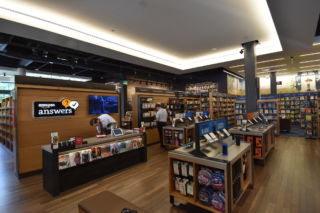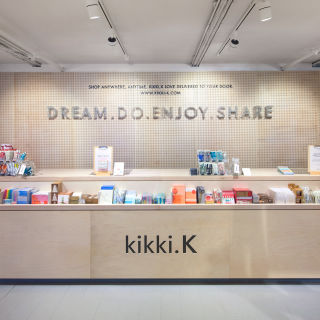Amazon Books, Seattle
Design Credit:
Amazon.com in-house team.
amazon.com
Not far from Amazon’s Seattle headquarters, in the bustling University Village Mall, is a surprise addition to the digital behemoth’s offerings: a physical bookstore.
The newly opened store is designed as a physical extension of Amazon.com, bridging the gap between digital and bricks-and-mortar, with a new approach to ‘clicks-to-bricks’. By bringing Amazon’s sizeable knowledge about what shoppers want into the physical space, the new Amazon Books approaches the traditional bookstore in a way that puts the customer at the centre.
At first glance, Amazon Books is simple and familiar. The aesthetic looks exactly like any chain bookshop, with neutral tones, nooks for seating and wooden shelves. However, there are a few key differences:
Amazon has singlehandedly done more to destroy the traditional bookshop than any other company. So it is a pleasing irony that the brand has discovered the importance of physical retail.
Amazon Books stocks only around 5,000 titles, as compared to a more standard 10-15,000. However, the titles have been selected based on their performance on the Amazon store; either in terms of sales, word-of-mouth buzz, or reader ratings. Only books rated 4.5 stars or above feature in the store and every title is displayed face-out for improved visibility and serendipitous browsing.
Shelf point of sale features reviews from the website, alongside real customer reviews. Barcoded signs also encourage shoppers to visit the Amazon.com store for more information.
Amazon’s branded digital devices are prominently displayed, with its Kindle, Echo and Fire products set up for exploration and interaction. With support from the Amazon Answers desk, the range takes centre stage in store, so it is clear that Amazon see the store as a platform to promote wider products and services.
The location too makes perfect sense; in the campus mall for the University of Washington, where a new generation of students will grow up with an Amazon instead of Barnes & Noble.
There are no price tags, thus denying the Amazon-esque practice of showrooming. Product prices can be checked and confirmed using the Amazon app or the store’s price-check boxes – with the guarantee that the current price on Amazon.com is what you’ll pay in store.
Even the purchasing experience itself elegantly links the brand’s online and physical worlds. When you pay with an Amazon-registered card, you’ll receive immediate email notification of your purchase, along with an instant update to your Amazon.com purchase history.
The whole thing is so seamless that the main difference between shopping Amazon online versus in-store is the walls.















